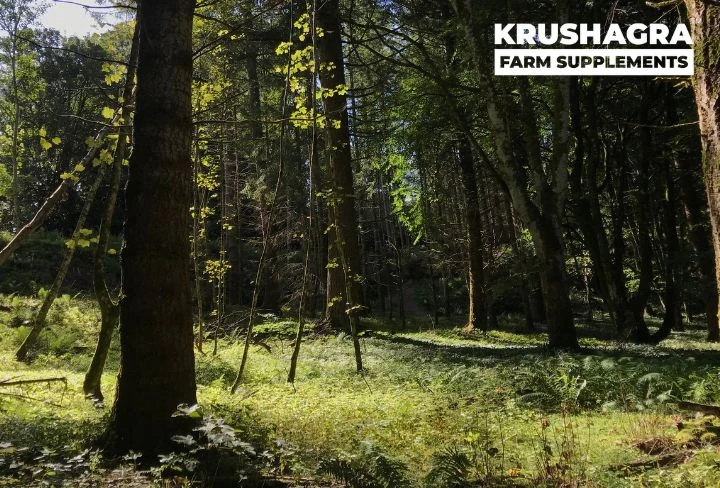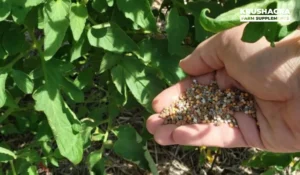Introduction
Forestry is an essential part of our ecosystem, providing habitat, clean air, water, and natural resources. However, pests and diseases pose a significant threat to forest health, leading to substantial economic losses and environmental damage. Pest management is, therefore, crucial to maintain the health and productivity of forests. However, the use of conventional pesticides can have negative impacts on the environment, wildlife, and human health. Biopesticides, on the other hand, offer a sustainable and effective alternative for pest management in forestry. In this blog, we will discuss the advantages of using biopesticides in forestry for sustainable pest management.
Advantages of Using Biopesticides in Forestry
Effective Pest Control
Biopesticides have been proven to be effective in controlling a wide range of pests and diseases in forestry. For example, the fungus Beauveria bassiana is a biopesticide that is effective in controlling the spruce budworm, a major pest of spruce and fir trees in North America. Similarly, Bacillus thuringiensis, a bacterium that produces a protein toxic to insects, is used to control forest pests such as gypsy moth and forest tent caterpillar. Biopesticides offer a sustainable and effective solution for pest management in forestry.
Minimal Environmental Impact
Biopesticides have minimal impact on the environment, as they are biodegradable and have a low toxicity to non-target organisms. Conventional pesticides, on the other hand, can have significant environmental impacts, such as contaminating water sources, harming beneficial insects, and affecting wildlife. Biopesticides are an environmentally friendly alternative for pest management in forestry.
Reduced Risk of Pesticide Resistance
Pesticide resistance is a significant challenge in pest management, as pests can develop resistance to pesticides over time, rendering them ineffective. Biopesticides offer a solution to this problem, as they work by disrupting the life cycle of pests rather than killing them outright. This means that there is a reduced risk of pest populations developing resistance to biopesticides, making them a sustainable and long-term solution for pest management in forestry.
Better for Human Health
Conventional pesticides can have negative impacts on human health, such as causing respiratory problems, skin irritation, and even cancer. Biopesticides, on the other hand, have minimal impact on human health, as they are derived from natural sources and have low toxicity to humans. This makes them a safer option for pest management in forestry.
Compliant with Organic Farming Standards
Biopesticides are compliant with organic farming standards, making them a suitable option for organic forestry. Organic farming relies on sustainable and environmentally friendly practices, and the use of biopesticides aligns with these principles.
Cost-Effective
Biopesticides can be cost-effective in the long run, as they offer a sustainable solution for pest management in forestry. Although they may be more expensive initially than conventional pesticides, biopesticides offer a long-term solution that reduces the need for repeated applications and minimizes environmental damage. This can lead to significant cost savings over time.
Increased Biodiversity
Biopesticides can help to increase biodiversity in forests, as they have minimal impact on non-target organisms such as beneficial insects, birds, and mammals. This, in turn, can lead to a more balanced ecosystem and a healthier forest environment.
Examples of Biopesticides Used in Forestry
Beauveria bassiana
Beauveria bassiana is a fungus that is effective in controlling a range of forest pests, including spruce budworm, eastern tent caterpillar, and gypsy moth. The fungus infects the pest by penetrating its cuticle and growing inside the insect, eventually killing it. Beauveria bassiana is considered to be a safe and effective biopesticide, as it has minimal impact on non-target organisms and is not harmful to humans.
Bacillus thuringiensis
Bacillus thuringiensis is a bacterium that produces a protein toxic to insects. It is used to control a range of forest pests, including gypsy moth, forest tent caterpillar, and spruce budworm. The bacterium is ingested by the pest and produces a toxin that disrupts the insect’s digestive system, eventually leading to its death. Bacillus thuringiensis is considered to be a safe and effective biopesticide, as it has minimal impact on non-target organisms and is not harmful to humans.
Spinosad
Spinosad is a biopesticide that is derived from a soil bacterium. It is effective in controlling a range of pests, including sawflies, beetles, and caterpillars. Spinosad works by disrupting the nervous system of the pest, eventually leading to its death. Spinosad is considered to be a safe and effective biopesticide, as it has minimal impact on non-target organisms and is not harmful to humans.
Neem Oil
Neem oil is derived from the neem tree and is effective in controlling a range of pests, including aphids, mites, and whiteflies. Neem oil works by disrupting the life cycle of the pest, eventually leading to its death. Neem oil is considered to be a safe and effective biopesticide, as it has minimal impact on non-target organisms and is not harmful to humans.
Conclusion
Biopesticides offer a sustainable and effective solution for pest management in forestry. They offer several advantages over conventional pesticides, including minimal environmental impact, reduced risk of pesticide resistance, better for human health, compliant with organic farming standards, cost-effective, and increased biodiversity. Biopesticides are derived from natural sources and have minimal impact on non-target organisms, making them a safer and more environmentally friendly option for pest management in forestry. The use of biopesticides can help to maintain the health and productivity of forests while minimizing environmental damage and promoting a more balanced ecosystem. It is essential to continue research and development of biopesticides to improve their effectiveness and expand their use in forestry.






